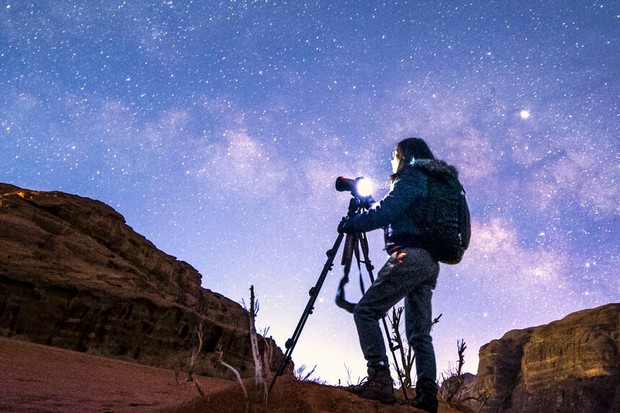
Astrophotography is a branch of astronomy that deals with recording the images of celestial objects. It's like an advanced version of taking pictures while stargazing or capturing the night sky. Stars, planets, galaxies, nebulae, and other phenomena are studied through astrophotography. Star trails, a series of photographs taken at long exposure times, are often combined to create a star trail image.
Astrophotography is time-consuming and expensive, requiring special equipment to capture images in the dark with long exposure times. It also produces a lot of data that needs to be processed through software such as Photoshop, etc., before it can be readily visualized by the general public. Although astrophotography is time-consuming and expensive, it offers spectacular images of the beautiful night sky.
How does Astrophotography work?
Astrophotography involves taking a camera outside at night to take pictures of the stars in the sky. To get started, one needs to choose an astronomy target, e.g., Saturn or M44 (a.k.a the Beehive Cluster), and set up a camera to take pictures of it, e.g., a best DSLR (Digital Single-Lens Reflex) camera with a telephoto lens attached. Then, one needs to go outside and align the telescope to point at the target before going back indoors to start imaging, i.e., taking long-exposure pictures with the astrophotography camera. At this point, one would need to take many pictures of the sky. And then, one can go back inside and start processing the images with software such as DeepSkyStacker, etc., which will stack all of the images together and remove any noise (random pixel values) in them. Finally, one will need to process the images with software such as Photoshop, etc., to make them visually appealing and easier to comprehend.



























